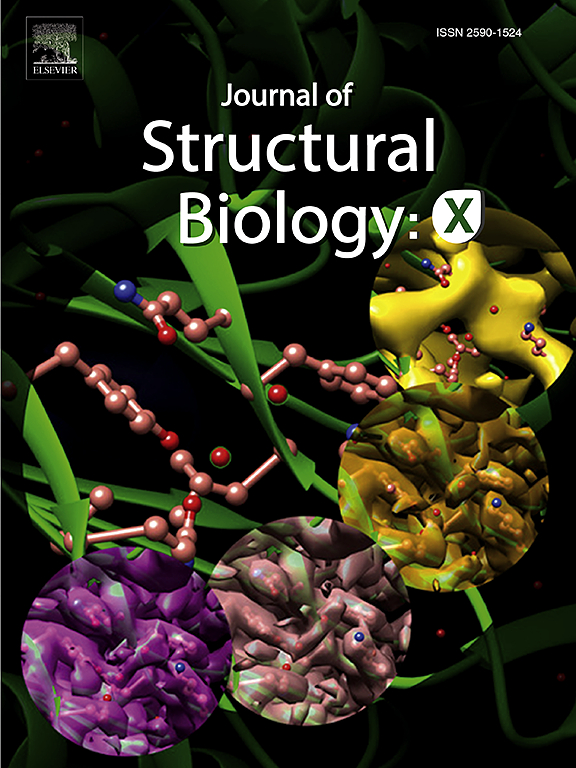溶血磷脂酸受体1与不同G蛋白结合的结构见解。
IF 2.7
3区 生物学
Q3 BIOCHEMISTRY & MOLECULAR BIOLOGY
引用次数: 0
摘要
溶血磷脂酸(LPA)和鞘氨醇-1-磷酸(S1P)是来源于细胞膜的生物活性溶血磷脂,可激活G蛋白偶联受体内皮分化基因家族。这些受体的激活通过G蛋白如Gi/o、Gq/11和G12/13触发多个下游信号级联反应。因此,LPA和S1P介导多种生理过程,包括细胞骨架动力学、神经突缩回、细胞迁移、细胞增殖和细胞内离子通量。然而,EGD受体的g蛋白偶联选择性的基础仍不清楚。在这里,我们展示了lpa激活的LPA1与Gi、Gq和G13异源三聚体配合物的低温电镜结构。三种LPA1-G蛋白结构的比较表明,细胞内环2 (ICL2)和ICL3的构象明显不同,这可能是由不同的Gα蛋白界面诱导的。有趣的是,这种g蛋白界面相互作用是LPA和S1P受体的共同特征。我们的发现为理解内皮分化基因家族中g蛋白偶联的混杂性提供了线索。本文章由计算机程序翻译,如有差异,请以英文原文为准。
Structural insights into the engagement of lysophosphatidic acid receptor 1 with different G proteins
Lysophosphatidic acid (LPA) and sphingosine-1-phosphate (S1P) are bioactive lysophospholipids derived from cell membranes that activate the endothelial differentiation gene family of G protein-coupled receptors. Activation of these receptors triggers multiple downstream signaling cascades through G proteins such as Gi/o, Gq/11, and G12/13. Therefore, LPA and S1P mediate several physiological processes, including cytoskeletal dynamics, neurite retraction, cell migration, cell proliferation, and intracellular ion fluxes. The basis for the G-protein coupling selectivity of EDG receptors, however, remains unknown. Here, we present cryo-electron microscopy structures of LPA-activated LPA1 in complexes with Gi, Gq, and G13 heterotrimers. Comparison of the three LPA1-G protein structures shows clearly different conformations of intracellular loop 2 (ICL2) and ICL3 that are likely induced by the different Gα protein interfaces. Interestingly, this G-protein interface interaction is a common feature of LPA and S1P receptors. Our findings provide clues to understanding the promiscuity of G-protein coupling in the endothelial differentiation gene family.
求助全文
通过发布文献求助,成功后即可免费获取论文全文。
去求助
来源期刊

Journal of structural biology
生物-生化与分子生物学
CiteScore
6.30
自引率
3.30%
发文量
88
审稿时长
65 days
期刊介绍:
Journal of Structural Biology (JSB) has an open access mirror journal, the Journal of Structural Biology: X (JSBX), sharing the same aims and scope, editorial team, submission system and rigorous peer review. Since both journals share the same editorial system, you may submit your manuscript via either journal homepage. You will be prompted during submission (and revision) to choose in which to publish your article. The editors and reviewers are not aware of the choice you made until the article has been published online. JSB and JSBX publish papers dealing with the structural analysis of living material at every level of organization by all methods that lead to an understanding of biological function in terms of molecular and supermolecular structure.
Techniques covered include:
• Light microscopy including confocal microscopy
• All types of electron microscopy
• X-ray diffraction
• Nuclear magnetic resonance
• Scanning force microscopy, scanning probe microscopy, and tunneling microscopy
• Digital image processing
• Computational insights into structure
 求助内容:
求助内容: 应助结果提醒方式:
应助结果提醒方式:


